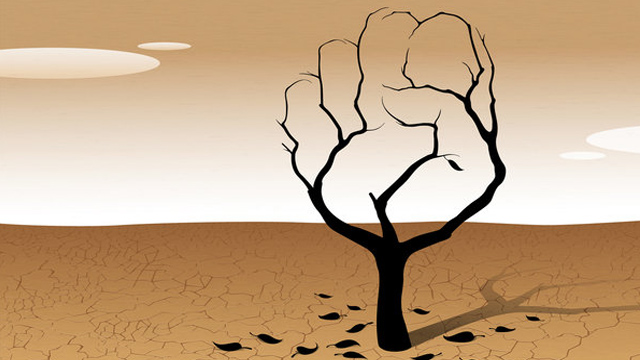It’s tempting to attribute much of the recent dischord in North Africa and the Middle East to politics. And in the most direct sense, it’s true. In Tunisia, Egypt, Yemen, and now Syria, the people have risen up against brutal and corrupt regimes. But dig a little deeper, and you find that the unrest is more broadly driven by drought and food shortages — themselves linked to environmental shifts spurred on by climate change.
In a new NYT op-ed, Thomas Friedman expounds on this idea:
All these tensions over land, water and food are telling us something: The Arab awakening was driven not only by political and economic stresses, but, less visibly, by environmental, population and climate stresses as well. If we focus only on the former and not the latter, we will never be able to help stabilize these societies.
In Syria, for example, the five years leading up to the 2011 uprising was marked by one of the worst droughts and most severe series of crop failures in the country’s history.
“If climate projections stay on their current path, the drought situation in North Africa and the Middle East is going to get progressively worse, and you will end up witnessing cycle after cycle of instability that may be the impetus for future authoritarian responses,” argues Francesco Femia of the Center for Climate and Security in Washington. “There are a few ways that the U.S. can be on the right side of history in the Arab world. One is to enthusiastically and robustly support democratic movements.” The other? Invest in water management projects and other climate-adaptive infrastructure that makes the countries better able to respond to climate change.
According to Friedman, the situation looks even grimmer when you take into account population growth in the water-scarce Middle East, where one-third of the overall population is below 15 years old.
The connection between climate change and global security is real. “We and the Arabs need to figure out — and fast — more ways to partner to mitigate the environmental threats where we can and to build greater resiliency against those where we can’t,” writes Friedman. “Twenty years from now, this could be all that we’re talking about.”
(via NYT)
Image: Thomas Fuchs / The New York Times
